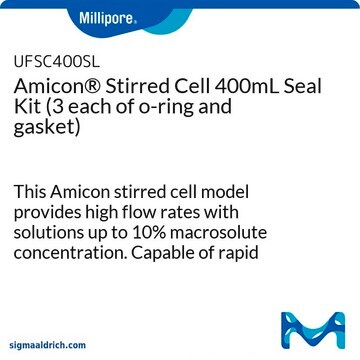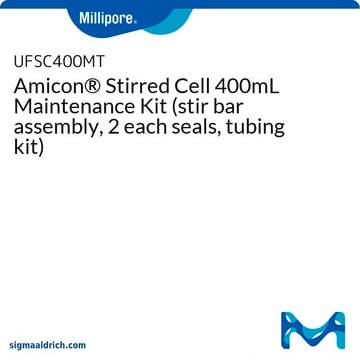XFUF04701
Solvent-resistant Stirred Cell, for 47 mm membranes
Protein Desalting, Protein Purification, Protein Concentration
Synonym(s):
Stirred Cell
About This Item
Recommended Products
material
316L stainless steel plate (base)
316L stainless steel top(s)
Nylon tube (pressure)
PTFE stir bar(s)
borosilicate glass cylinder
fluoroelastomer O-ring
high-density polyethylene funnel(s)
silicone tube (for filtrate)
Quality Level
feature
holdup volume 0.3 mL
parameter
2.5-75 mL process volume
6.2 bar max. inlet pressure (90 psi)
technique(s)
protein clean-up: suitable (desalting)
protein purification: suitable (concentration)
H
12.2 cm (4.8 in.)
diam.
8 cm
filter diam.
47 mm
filtration area
15 cm2
shipped in
ambient
General description
- Borosilicate glass cylinder and PTFE components for broad compatibility
- Autoclavable with membrane in-place
- Top plate opening provides access to contents without dismantling
- Few components, so it′s easy to clean and assemble
- For 47 mm disc filters
Applications
Concentration and Buffer Exchange Involving Organic Solvents
Certificates of Analysis (COA)
Search for Certificates of Analysis (COA) by entering the products Lot/Batch Number. Lot and Batch Numbers can be found on a product’s label following the words ‘Lot’ or ‘Batch’.
Already Own This Product?
Find documentation for the products that you have recently purchased in the Document Library.
Our team of scientists has experience in all areas of research including Life Science, Material Science, Chemical Synthesis, Chromatography, Analytical and many others.
Contact Technical Service



